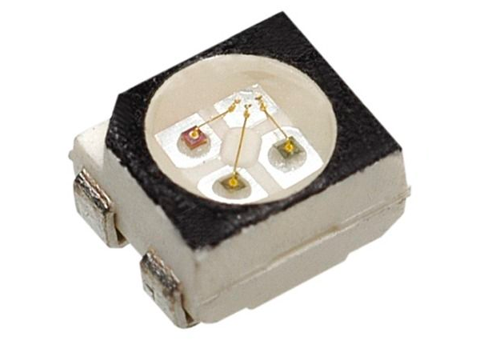tri-color LED
Three-color light-emitting diodes consist of three solid-color LEDs housed in one package. Normally, the colors are red (R), green (G) and blue (B). The purpose of this is to be able to reproduce many colors of the RGB color model by color mixing.
The color mixing is done by driving the three light emitting diodes, whose cathodes or anodes are individually designed via connecting wires, with different voltages. In addition to the three connecting wires, there is a fourth common connecting wire for the anode or cathode connections. The wavelengths of the individual LED colors are 630 nm to 650 nm for red, 520 nm to 530 nm for green and 460 nm to 470 nm for blue.
Tri-color LEDs are used where color tones need to change continuously, and colors transition seamlessly from one hue to another. For example, in decorative applications. In addition, tri-color LEDs can also be used for different status displays with continuous color changes or in RGB displays that do not have sufficient space for single-color LEDs.
Tri-color and bicolor LEDs are available in transparent plastic or glass packages with 3 mm and 5 mm diameters, for through-hole technology( THT) with lead wires and for SMT technology.

